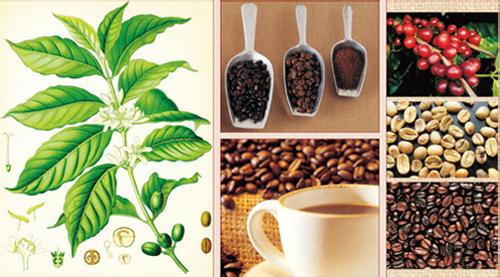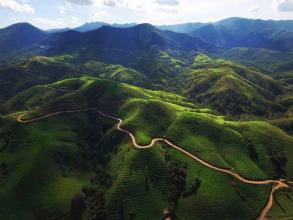Nicaragua lemon tree estate coffee beans taste characteristics grinding scale treatment varieties origin introduction
Taste characteristics of coffee beans from lemon manor in Nicaragua A brief introduction to the origin of varieties treated by grinding scale
Nicaragua is one of the poorest countries in Central America. Due to its poor economic foundation, the coffee industry is still relatively backward, while coffee farmers are in extreme poverty. Fortunately, Nicaraguan coffee has received some foreign aid funds to improve the quality of its coffee. The coffee produced in Nicaragua's Madagelba, Sinodega and Segovia is highly respected by coffee lovers all over the world. Especially the coffee produced in Madaguelba.
Nicaraguan coffee, grown in the north and middle of the country. Coffee is a pillar industry in Nicaragua, producing nearly 100,000 tons of coffee beans every year. Many people who have tasted Nicaraguan coffee usually think that it is no different from Salvadoran coffee or Honduran coffee. It is rich in aroma, smooth and delicate, with a slightly bitter finish, like a faint taste in the wine. Nicaragua is now one of the poorest countries in Central America.
Nicaraguan coffee industry is no exception. The 1979 revolution forced coffee planters to flee to Miami. A period of indecision followed, when the government considered whether to redistribute land, including many plantations, which led to a shortage of coffee and a decline in production, from more than 1 million bags in the early 1970s to less than 600000 bags in 1990. Now the government has opened up the coffee industry, and private owners control the market.
In a purely natural planting environment, more complex operations are used to maintain the delicate aroma and taste of coffee; high-quality high-quality mountain beans are grown in northern Nicaragua between Matagalpa and Jinotega, with an average annual rainfall of 1500-1700mm and temperatures between 20-29 degrees Celsius.

Important Notice :
前街咖啡 FrontStreet Coffee has moved to new addredd:
FrontStreet Coffee Address: 315,Donghua East Road,GuangZhou
Tel:020 38364473
- Prev

Flavor description of Honduran Coffee beans introduction of Grinding scale varieties by Taste treatment
Flavor description of Honduran coffee beans taste treatment grinding scale variety introduction washing treatment of Honduran coffee, it is not only BIO organic certified coffee, but also an organic trade coffee, the proceeds from the sale of raw coffee beans will directly benefit the country of origin manor, used for sanitation, education, drinking water and other projects. Every time you buy a bag of Fairtrade coffee, it's for coffee.
- Next

Sidamo Coffee Bean Flavor description Taste Grinding scale treatment Variety Regional characteristics
Sidamo Coffee Bean Flavor description Taste Grinding scale treatment Variety Regional characteristics Ethiopia Sidamo is a type of single origin, growing in Arabica coffee in Sidamo province, Ethiopia. Like coffee in most African countries, Ethiopian Sidamo is characterized by small gray beans, but characterized by its rich, spicy, wine or chocolate-like taste and floral aroma.
Related
- Detailed explanation of Jadeite planting Land in Panamanian Jadeite Manor introduction to the grading system of Jadeite competitive bidding, Red bid, Green bid and Rose Summer
- Story of Coffee planting in Brenka region of Costa Rica Stonehenge Manor anaerobic heavy honey treatment of flavor mouth
- What's on the barrel of Blue Mountain Coffee beans?
- Can American coffee also pull flowers? How to use hot American style to pull out a good-looking pattern?
- Can you make a cold extract with coffee beans? What is the right proportion for cold-extracted coffee formula?
- Indonesian PWN Gold Mandrine Coffee Origin Features Flavor How to Chong? Mandolin coffee is American.
- A brief introduction to the flavor characteristics of Brazilian yellow bourbon coffee beans
- What is the effect of different water quality on the flavor of cold-extracted coffee? What kind of water is best for brewing coffee?
- Why do you think of Rose Summer whenever you mention Panamanian coffee?
- Introduction to the characteristics of authentic blue mountain coffee bean producing areas? What is the CIB Coffee Authority in Jamaica?

